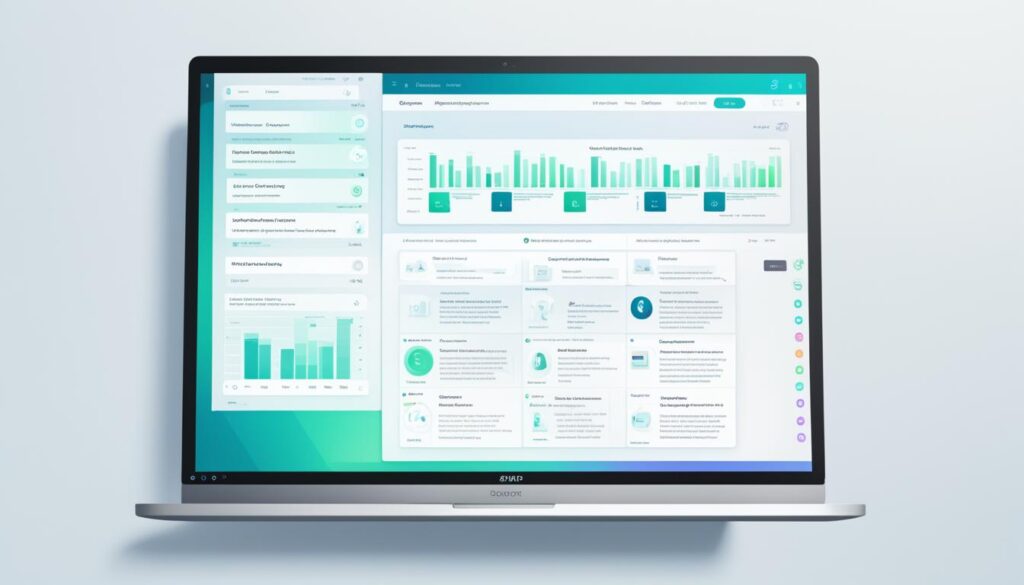Are you looking to create a knowledge base for your business but don’t know where to start? Building a knowledge base can be a straightforward process if you follow the right steps. In this quick guide, we’ll walk you through the essential aspects of knowledge base creation, from selecting the right software to organizing and publishing your articles.
Creating a knowledge base requires careful planning and consideration. By implementing a knowledge management system, you can streamline the process of documenting, organizing, and sharing information with your customers. A robust knowledge base management tool will offer features like a powerful search tool, search engine friendliness, categorization options, detailed reports, and easy-to-use publishing tools.
When starting your knowledge base, it’s best to begin with a small number of topics and expand iteratively based on customer needs. This approach ensures that you provide up-to-date and valuable information to your customers while avoiding overwhelming yourself with unnecessary content.
Throughout this guide, we’ll explore the key steps involved in creating a knowledge base. By the end, you’ll have a clear understanding of how to build a knowledge base that caters to your customers’ needs and enhances their experience with your products or services.
Choose the Right Knowledge Base Software
When it comes to building an effective knowledge base, selecting the right knowledge base software is crucial. With the myriad of options available, it’s important to consider certain key features that can enhance the functionality and user experience of your knowledge base platform.
First and foremost, prioritize a knowledge base software that offers a robust search tool. This ensures that users can quickly and easily find the information they are looking for. Additionally, search engine friendliness is essential for maximizing the discoverability of your knowledge base on popular search engines.
Categorization options are another important consideration. A knowledge base platform with the ability to categorize articles and topics allows users to navigate through the content more efficiently, leading to a better overall user experience.
Furthermore, detailed reports can provide valuable insights into user behavior, content effectiveness, and knowledge base performance. These reports can help you identify areas for improvement and make data-driven decisions to optimize your knowledge base.
Another feature to look out for is simple publishing tools. The ability to easily create and publish articles ensures a smooth and efficient content creation process.
Artificial Intelligence (AI) features can also greatly enhance your knowledge base. AI can assist in drafting and editing articles, suggest relevant content, and provide advanced analytics to improve your knowledge base best practices.
Choosing the right knowledge base software is a critical step in building an effective and user-friendly knowledge base. By considering factors such as search tool capabilities, categorization options, detailed reports, simple publishing tools, and AI features, you can ensure that your knowledge base platform meets your organization’s needs and delivers exceptional user experiences.
Benefits of AI Features
AI features in knowledge base software offer numerous advantages. Firstly, AI can help automate the process of drafting and editing articles, freeing up valuable time for your team to focus on other important tasks. AI can also suggest relevant content based on user queries, optimizing the search experience and improving user satisfaction.
Additionally, AI-powered analytics provide valuable insights into user behavior and content performance. These insights can help you understand user preferences, identify knowledge gaps, and make data-driven decisions to continuously improve your knowledge base best practices.
By leveraging AI features in your knowledge base software, you can enhance the efficiency, effectiveness, and overall user experience of your knowledge base platform.
Comparison of Knowledge Base Software
| Features | Knowledge Base Software A | Knowledge Base Software B | Knowledge Base Software C |
|---|---|---|---|
| Search Tool | ✓ | ✓ | ✓ |
| Search Engine Friendliness | ✓ | ✓ | ✓ |
| Categorization Options | ✓ | ✓ | ✓ |
| Detailed Reports | ✓ | ✓ | ✓ |
| Simple Publishing Tools | ✓ | ✓ | ✓ |
| AI Features | ✓ | ✓ | ✓ |

Determine the Topics to Cover
To create an effective knowledge base, you need to determine the topics to cover. This involves analyzing your support queue for frequently asked questions (FAQs) and gathering feedback from your team. By identifying the most common and critical questions, you can prioritize the order in which you’ll create each article.
Start by focusing on the topics that have a high frequency of questions or are of critical importance to your customers. These topics should be prioritized based on their impact on customer satisfaction and the efficiency of your support team.
Tip: Use your knowledge management system to categorize and tag each topic to make it easier to navigate and search for information. This will help you organize your knowledge base effectively.
How to Prioritize Articles
When prioritizing articles for your knowledge base, consider the following factors:
- Frequently Asked Questions: Focus on addressing the questions that are asked most often by your customers. This ensures that you provide immediate help for their most common pain points.
- Criticality Ratings: Determine the criticality ratings for different topics based on their impact on customers and your support team’s workload. Addressing high-impact issues first will have the greatest impact on customer satisfaction.
- Customer Feedback: Gather feedback from your customers to identify areas where your knowledge base can provide the most value. This can be done through surveys, reviews, or direct conversations with customers.
Remember, you don’t need to create every possible article right from the start. Instead, focus on reaching a point where you have enough content to launch an initial version of your knowledge base. You can use data from your live knowledge base, such as search queries and user feedback, to identify additional articles needed.

Once you have determined the topics to cover and prioritized your articles, you can proceed to organize your knowledge base in a way that is intuitive and user-friendly.
Organize Your Knowledge Base
Organizing your knowledge base in a logical and user-friendly manner is essential. By creating collections and categories, you can group similar topics and make it easy for customers to navigate and find the information they need.
One effective approach is to consider the structure that best suits your business. You can organize your knowledge base by product type, creating separate collections for each product, or by workflow-specific categories, grouping articles that relate to specific processes or tasks. This way, users can easily locate the relevant information within your knowledge base.
The exercise of categorizing your articles can also help generate new topic ideas. As you assess the content you already have and identify gaps, you may discover areas where additional articles would be valuable to your users.
By organizing your knowledge base effectively, you improve user navigation and provide a more seamless experience for your customers. This, in turn, enhances their satisfaction and increases the value they derive from your knowledge base.
Write and Publish Your Articles
Now that you have identified the topics for your knowledge base articles, it’s time to start writing and publishing them. Remember to use clear and descriptive titles that accurately represent the content of each article. This will help users easily find the information they need.
When writing your articles, maintain a simple and helpful tone. Use language that your audience can understand and provide practical solutions to their problems. To further enhance understanding, include visuals such as screenshots or videos that demonstrate key concepts.
For better readability, format your articles with short paragraphs, bullet points, and bold/italic highlighting for important information. This will make it easier for users to scan and locate the specific details they are looking for.
Once all your articles are written, take the time to finalize the design elements of your knowledge base. This includes ensuring consistent formatting, optimizing visuals, and organizing the articles in a logical structure. Then, publish your articles and make them easily accessible on your website or other relevant channels.
FAQ
How do I create a knowledge base?
Creating a knowledge base can be as simple or as complex as you want it to be. Start by choosing the right knowledge base software that offers features such as a great search tool, search engine friendliness, categorization options, detailed reports, and simple publishing tools. Start small with a few topics and expand based on customer needs.
What should I consider when choosing knowledge base software?
When choosing knowledge base software, consider features such as a great search tool, search engine friendliness, categorization options, detailed reports, and simple publishing tools. AI features can also be helpful for drafting and editing articles. Start small with a tool that meets your needs before scaling up.
How can I determine the topics to cover in my knowledge base?
Analyze your support queue for frequently asked questions and gather feedback from your team. Prioritize the creation of articles based on factors such as the frequency of certain questions and criticality ratings. Start with enough content to launch an initial version of your knowledge base and use live data to identify additional articles needed.
How should I organize my knowledge base?
Organize your knowledge base in a logical and user-friendly manner by creating collections and categories to group similar topics. Consider the structure that best suits your business, such as organizing by product type or workflow-specific categories. Categorizing your articles can also help generate new topic ideas.
What is the best way to write and publish my articles?
Start writing your articles based on the topics you’ve identified. Use clear and descriptive titles, a simple and helpful tone, and include visuals like screenshots or videos to enhance understanding. Format your articles with short paragraphs, bullet points, and bold/italic highlighting for important information. Once all your articles are written, finalize the design elements, publish the articles, and promote your knowledge base on your website and other relevant channels.
